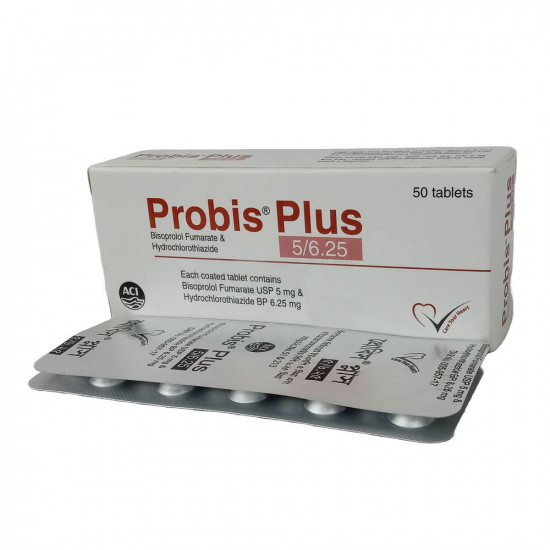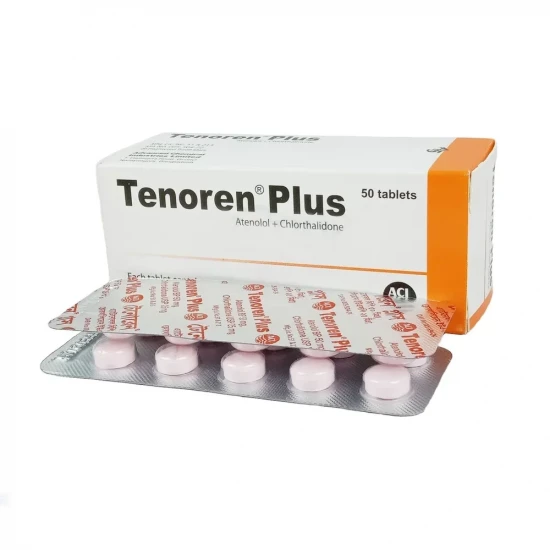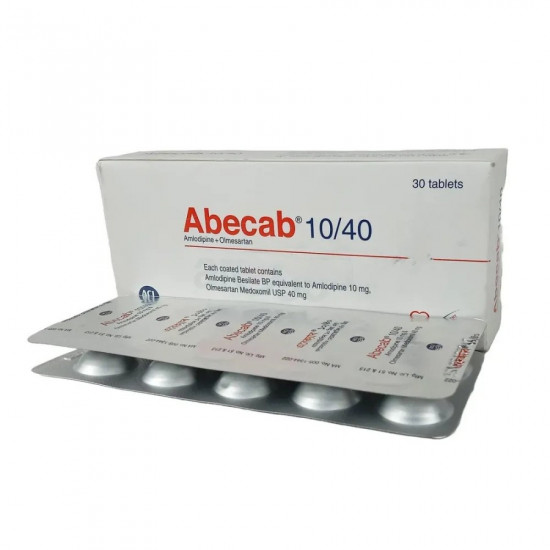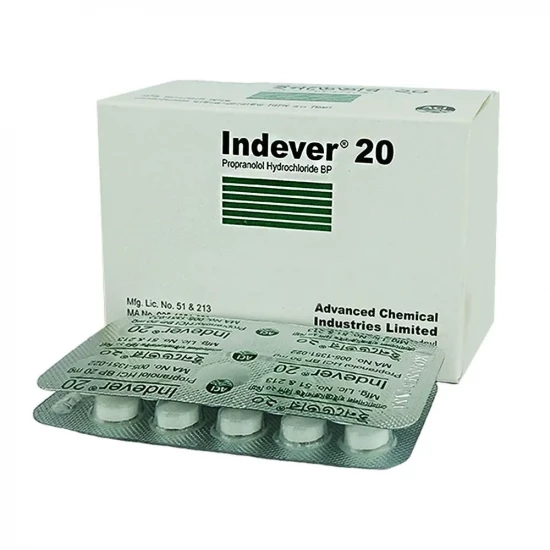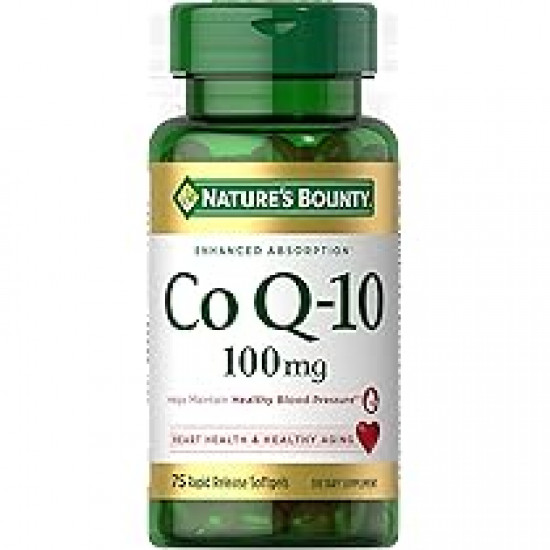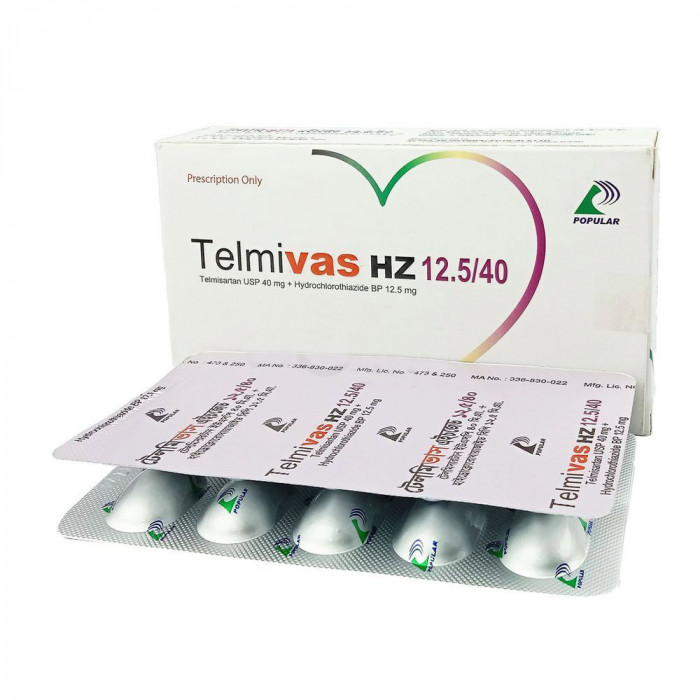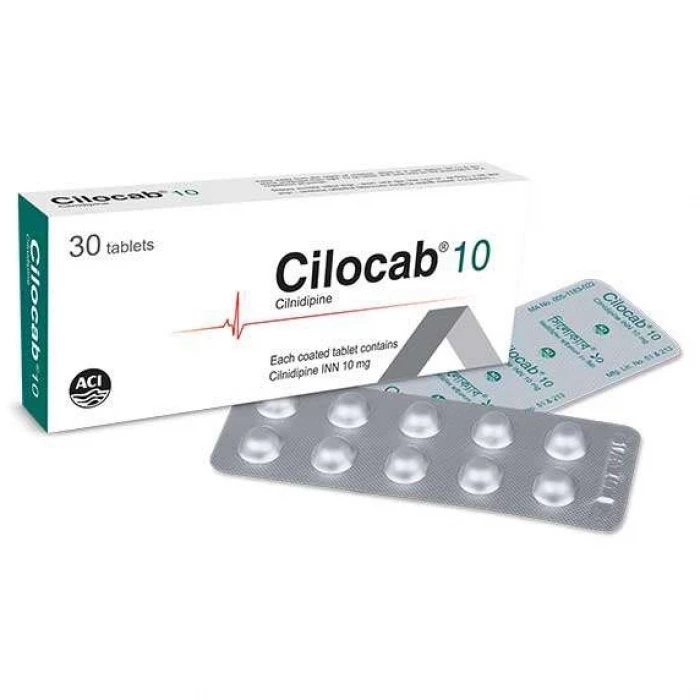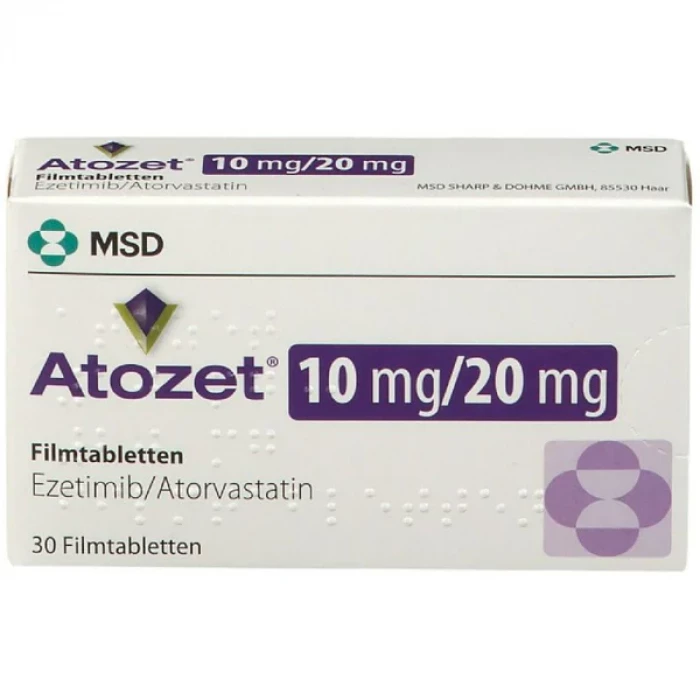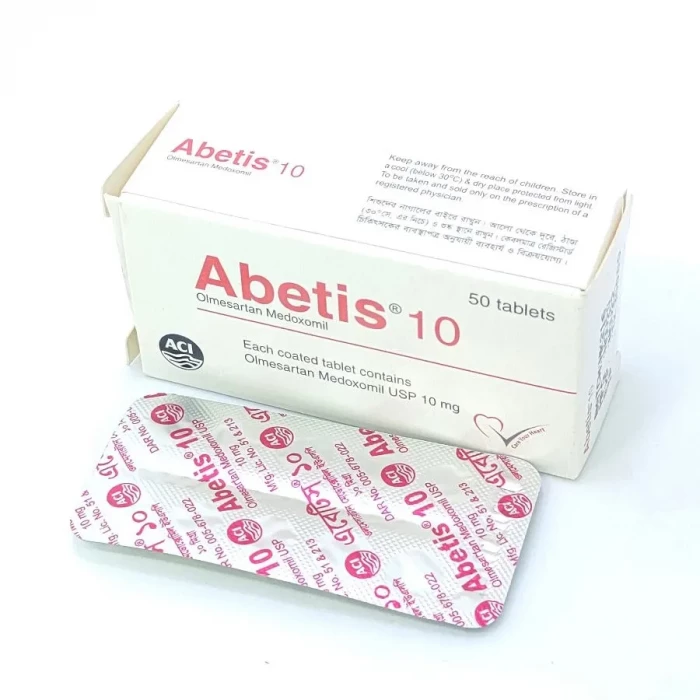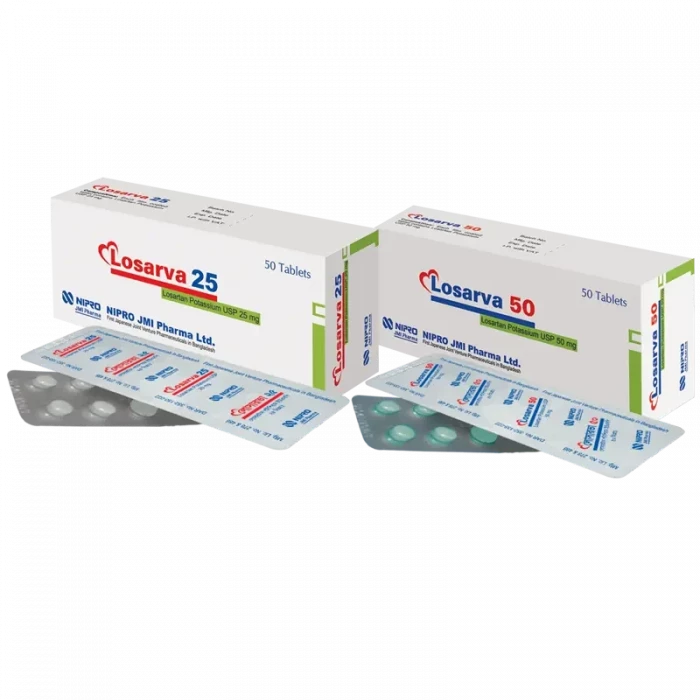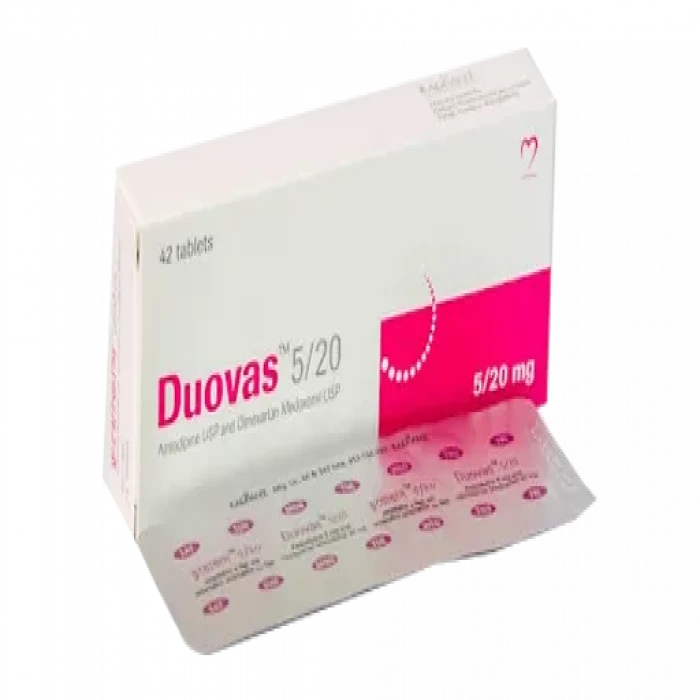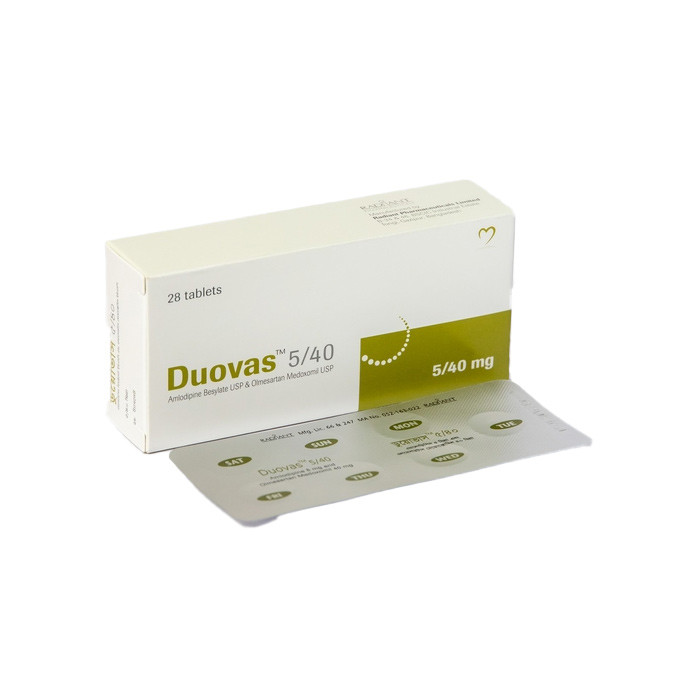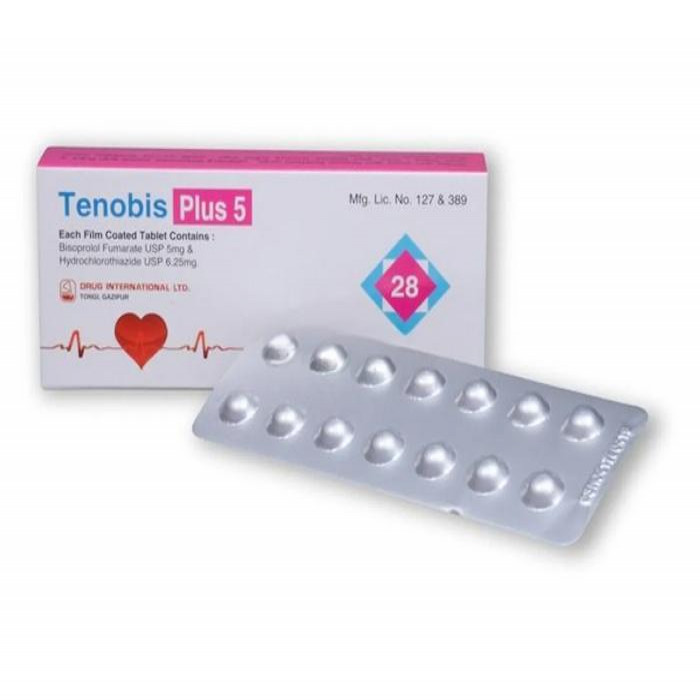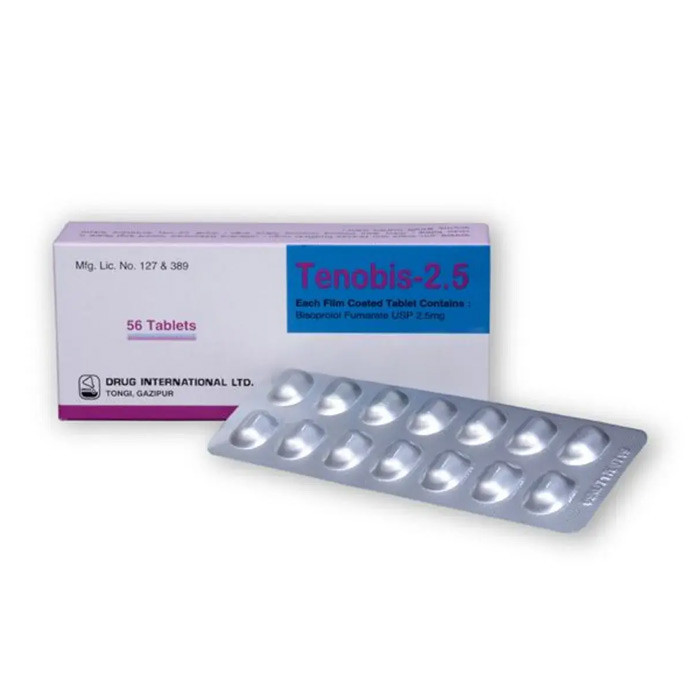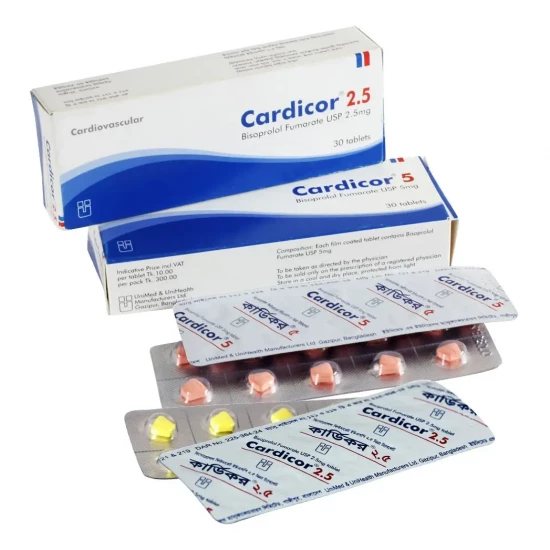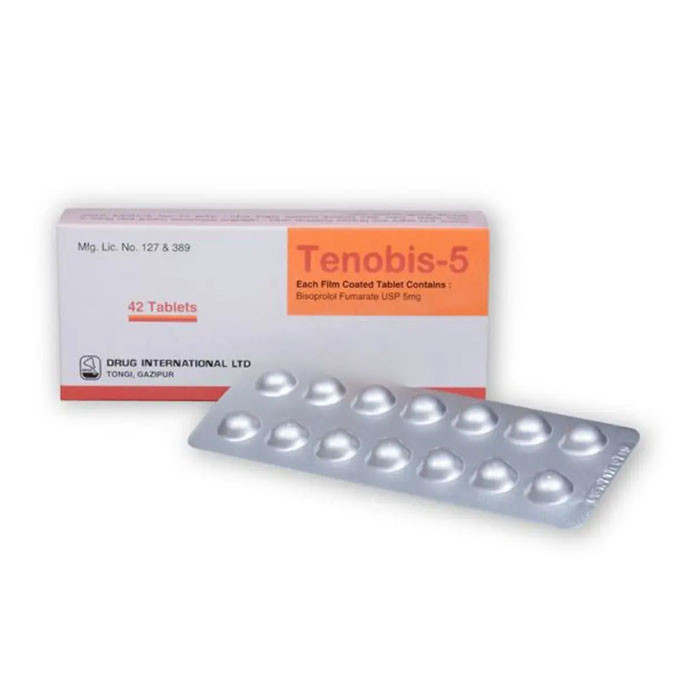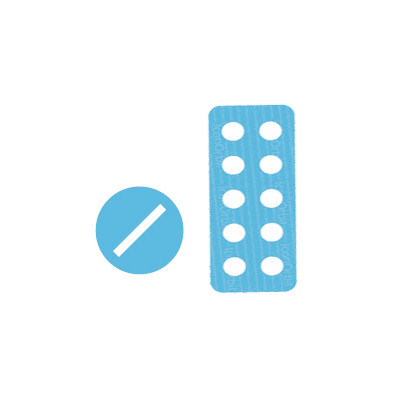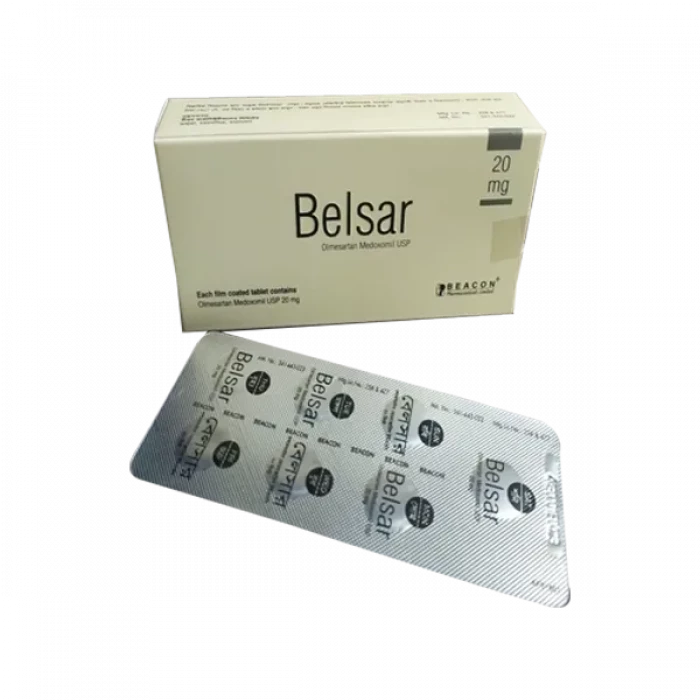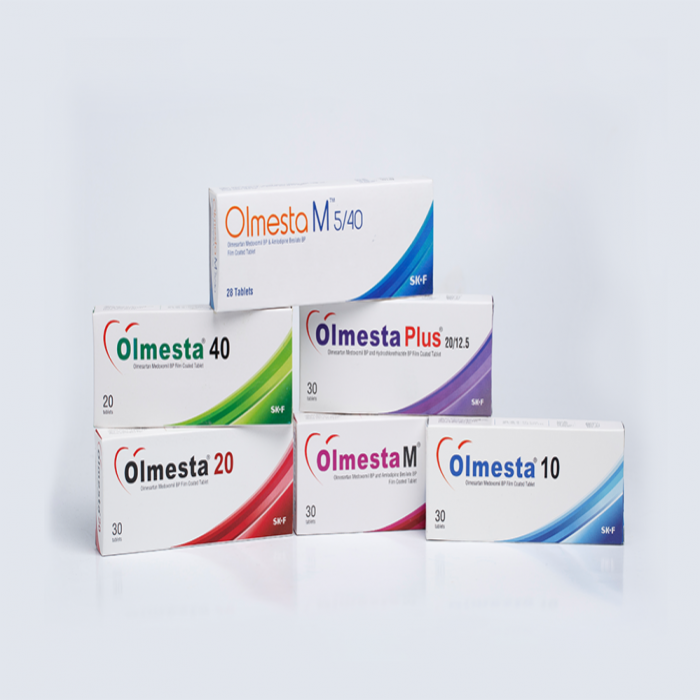
✔ 100% Authentic Product
👁️ Currently Viewing 2601
✅ Description:
Olmesta M 40 contains two medicines, both of which help to control high blood pressure. Lowering blood pressure helps to reduce your risk of having a heart attack or a stroke in the future. Olmesta M 40 may be taken on an empty stomach or along with food. However, it is better to take it regularly at a fixed time each day, as prescribed by your doctor. The dose will depend on your condition and how you respond to the medicine. It is important to keep taking this medicine even if you feel well. By lowering your blood pressure, it is reducing your risk of heart attack or stroke so do not stop taking it unless your doctor tells you to. You can help this medicine work better by making a few changes to your lifestyle by being active, stopping smoking and eating low salt and low-fat diet. The most common side effects of this medicine include swelling in your ankles or feet (edema), sleepiness, dizziness, headache, taste change, upset stomach, and tiredness. Since it may cause sleepiness and dizziness, do not drive or do anything requiring concentration until you know how it affects you. Talk to your doctor if any of the side effects bother you or do not go away. Before taking this medicine, let your doctor know if you have any kidney or liver problems or severe dehydration. Pregnant or breastfeeding women should also consult their doctor before taking it. While using this medicine, your blood pressure will be monitored regularly and your kidney function may also need to be tested.
Uses of Olmesta M 40
- Hypertension (high blood pressure)
Side effects of Olmesta M 40
Common
- Sleepiness
- Taste change
- Ankle swelling
- Headache
- Flushing (sense of warmth in the face, ears, neck and trunk)
- Dizziness
- Tiredness
- Palpitations
- Upset stomach
- Increased potassium level in blood
How to use Olmesta M 40
Take this medicine in the dose and duration as advised by your doctor. Swallow it as a whole. Do not chew, crush or break it. Olmesta M 40 may be taken with or without food, but it is better to take it at a fixed time.
How Olmesta M 40 works
Olmesta M 40 is a combination of two medicines: Olmesartan Medoxomil and Amlodipine which lower blood pressure effectively. Olmesartan Medoxomil is an angiotensin receptor blocker (ARB) and Amlodipine is a calcium channel blocker (CCB). They work by relaxing the blood vessels and making the heart more efficient at pumping blood throughout the body.

Quick Tips
- Olmezest AM 40 Tablet is a combination of two medicines that provides better blood pressure control than either medicine alone.
- It may cause dizziness or sleepiness. Do not drive or do anything requiring concentration until you know how it affects you.
- It may cause you to feel lightheaded or weak especially when you stand up. Rise slowly if you have been sitting or lying down.
- Avoid consuming alcohol as it may enhance the blood pressure lowering effect of Olmezest AM 40 Tablet.
- It can cause ankle or foot swelling. Raise your legs while you are sitting down and talk to your doctor if it does not go away.
- Do not take Olmezest AM 40 Tablet Tablet if you are pregnant, planning to conceive or breastfeeding.

Brief Description
Indication
Hypertension 5 mg/20 mg PO qDay intially; may increase dose after 1-2 weeks; not to exceed 10 mg/40 mg May be adminsitered concomitantly with other antihypertensive agents Elderly: May consider lower starting dose. Hepatic Impairment: Caution in patients with mild to moderate hepatic impairment.
Administration
Additive effect when used with catecholamine depleting drugs; monitor for hypotension and/or marked bradycardia. If used with clonidine, clonidine withdrawal should occur a few days after withdrawal of the beta-blocker to prevent rebound hypertension; if replacing clonidine by beta-blocker, beta-blocker should be introduced only after clonidine administration has stopped for several days. Concurrent use with prostaglandin synthase inhibiting drugs (e.g. indomethacin) may reduce the hypotensive effects of beta-blockers. Increased risk of hyperkalaemia w/ ACE inhibitors, K-sparing diuretics, K salts or K supplements and drugs that may increase serum K (e.g. ciclosporin, eplerenone). May potentiate BP lowering effects w/ other antihypertensives. May decrease glomerular filtration w/ NSAIDs which can cause acute renal failure. May increase serum concentrations and toxicity of lithium.
Adult Dose
Drugs that act on renin-angiotensin system can cause fetal injury and death when used in 2nd and 3rd trimesters of pregnancy. Olmesartan medoxomil should be discontinued as soon as possible once pregnancy is detected. Symptomatic hypotension may occur in patients who are volume- and/or salt-depleted. May be associated with oliguria, progressive azotaemia, and acute renal failure (rare). Patients with bilateral or unilateral renal artery stenosis may have increased risk of severe hypotension and renal insufficiency. Caution in renal impairment; monitor serum creatinine and potassium levels periodically. Avoid use in severe renal & hepatic impairment. Caution in patients with aortic or mitral valve stenosis, obstructive hypertrophic cardiomyopathy. Patients with primary aldosteronism may not respond to angiotensin receptor antagonist. Not recommended in lactation. Lactation: It is not known whether the amlodipine or olmesartan are excreted in human milk. Because of the potential for adverse effects on the nursing infant, a decision should be made whether to discontinue nursing or discontinue the drug, taking into account the importance of the drug to the mother.
Child Dose
Pregnancy Category: C (1st trimester); D (2nd & 3rd trimesters).
Renal Dose
Amlodipine relaxes peripheral and coronary vascular smooth muscle. It produces coronary vasodilation by inhibiting the entry of Ca ions into the slow channels or select voltage-sensitive channels of the vascular smooth muscle and myocardium during depolarisation. It also increases myocardial oxygen delivery in patients w/ vasospastic angina. Olmesartan is a selective and competitive angiotensin II Type 1 (AT1) receptor antagonist that blocks the vasoconstrictor and aldosterone-secreting effects of angiotensin II. As a result, olmesartan relaxes blood vessels, hence lowering BP and increases blood supply and oxygen to the heart.
Mode of Action
May be taken with or without food.
Precaution
Hypertension
Side Effect
Avoid use in severe renal impairment (CrCl< 20 mL/min).
Pregnancy Category Note
>10% Peripheral edema (11%) Frequency Not Defined Palpitation,Nocturia,Urinary frequency,Orthostatic hypotension,Pruritus,Rash Potentially Fatal: Acute renal failure.
Interaction
Pregnancy; biliary obstruction.
⚠️Disclaimer:
At ePharma, we’re committed to providing accurate and accessible health information. However, all content is intended for informational purposes only and should not replace medical advice from a qualified physician. Please consult your healthcare provider for personalized guidance. We aim to support, not substitute, the doctor-patient relationship.




